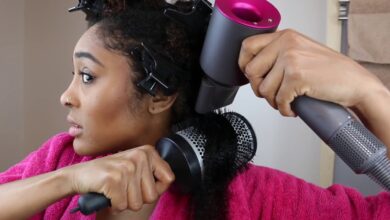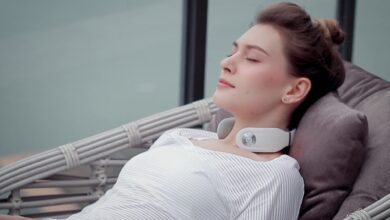How Our Fear of Aging Impacts the Mental Health of Our Children

You might have heard about “Sephora Kids“—here’s what experts suggest is driving the influx of teenagers and pre-teens fascinated by retinol and other anti-aging products.
Lately, my reflection in the mirror has been revealing some unexpected changes. My hair is gradually turning white, fine lines are emerging around my eyes, and deeper wrinkles are forming between my cheeks and mouth—distinctive signs of aging that my 43-year-old face can no longer conceal. Should I consider upgrading my nightly skincare routine?
A brief online search indicates that I’m not alone in this peculiar experience. There’s a surprising presence of youth fixated on aging concerns. These self-proclaimed “Sephora kids” have been frequenting beauty retailers like never before, investing their money in anti-aging remedies they believe will preserve their youthfulness indefinitely. This trend has sparked concern among both Sephora’s clientele and cultural observers.
Are these young seekers of a premature fountain of youth a sign of darker developments to come—or are they simply mirroring a superficial reality fueled by social media, filters, and strategic product placement?
“We’re promoting the notion that we should all be anti-aging, because aging is something to fear—and moreover, something to combat,” explains sociologist and University of British Columbia professor Laura Hurd.
An explosion in beauty marketing

I can’t dismiss this trend lightly. I, too, was once a susceptible youth, and as a tween and young teenager in the early 1990s, I vividly recall using my babysitting earnings to purchase an ice cream cone from the local Thrifty’s and then settling down on the floor next to the magazine stand to devour each teen magazine from cover to cover.
These magazines taught me that it was my responsibility to maintain a “fresh-faced” and attractive appearance, to skillfully conceal any blemishes or shine on my nose. I learned that my social standing and future happiness could be jeopardized by dark circles under my eyes or the freckles that seemed to cover my skin like a constellation, leaving me convinced that I was doomed to eternal outsider status. However, it never occurred to me to sneak some of my mom’s Oil of Olay.
In the past, anti-aging products were primarily targeted towards older women who were eager (or desperate) to maintain their appearance. This focus may explain why myself and other teenagers didn’t consider using them. Nowadays, acne treatments are still primarily aimed at teens.
However, the rise of social media exposes them to older beauty influencers who openly discuss their use of anti-aging skincare, Botox, and other cosmetic procedures. The prevalence of these products, often hyped as “must-haves” by marketers, means that teenagers are more inclined to try them today. This trend has become so widespread that major cosmetics companies are attempting to distance themselves from it—Unilever, for example, has launched a campaign aimed at safeguarding girls’ self-esteem from pressures related to anti-aging skincare.
A mirror warped by filters
Retouched photos created the delusion that others truly possessed these perfections, feeding the fantasy of my youth that a spotless face was both desirable and attainable.
It turns out that the history of that method predates photography itself. By the middle of the 19th century, when photography had advanced to the point where pores and wrinkles could be seen, people started pleading with photographers to airbrush or even actually paint away their flaws, according to Peiss. She explains, “What’s different now is that it’s accessible to everyone.”
It’s now easier than ever to get that perfect face on camera thanks to apps like Facetune and the user-friendly picture editing tools that come with every smartphone. The widespread use of filters has even sparked a countermovement known as #nofilter, in which participants assert that they share “candid” photos of their unprocessed faces.
However, studies indicate that up to 90% of individuals modify their selfies before publishing, so the #nofilter movement is far less popular than you might imagine.That has practical repercussions: Participants who altered their own images were more likely to think of themselves as less attractive, according to a 2023 study.
Additionally, they internalized what an outside observer would think of their appearance rather than putting their own self-image first, a practice known as “self-objectification,” according to theorists. Eating disorders, body shame, and mood disorders such as depression are linked to self-objectification.
Research indicates that teenagers may utilize selfies as a coping mechanism for body dysmorphia—a mental condition characterized by an obsession with perceived imperfections in one’s appearance—or as a means of gaining acceptance from their friends. Social media can also exacerbate the situation: Parents of eight to eighteen-year-olds who are self-conscious about their appearance were twice as likely to say that social media has a greater influence on their child’s self-image than real-life experiences in a nationally representative study conducted in 2022.
Social media has always been effective in personalizing content for users. However, trends that used to take months or even years now enter the mainstream in a matter of days. Advertisers are finding highly focused micromarkets based on internet activity and demographics, rather than pursuing bulk messaging. This is a startling development that puts the kids plus anti-aging serums equation into perspective.
What does all this mean for kids?
The apparent concern is whether a child’s frequently delicate (and wrinkle-free!) skin can withstand the harsh substances meant to erase wrinkles; reports of allergic reactions and facial freakouts are common. Furthermore, it’s unclear what youthful skin will gain from the trend of preventative Botox injections, which are intended to stop wrinkles before they start.
However, the more I see these trends, the more concerned I become about what will happen to children’s conceptions of themselves as they get older and their sense of reality when there aren’t many older people online.
Hurd is also fearful of the ways that prejudice is reinforced by the growing market for “anti-aging” goods.
She claims, “We are very upfront about the fact that we are against aging.” “We’re pushing the narrative that, at the very least, we ought to be fighting it and should be terrified of it.”
According to Hurd, this dread has serious repercussions for the elderly, ranging from casual ageism to institutional and social policies that put older folks in risk, dehumanize, and exclude them. Hurd’s research shows that older people’s self-esteem is negatively impacted by the societal stigma, particularly for women.
Self-perception is only the start: A loss of “social currency,” difficulties finding love, and prejudice at work are all linked to aging. Research on the topic is still in its early stages, but scholars are beginning to identify connections between elder abuse and ageism. Ageism can even encourage elder abuse.
Hurd claims that “the language of anti-aging is problematic.” “But we just put up with it.”
However, we don’t have to, and perhaps the alleged Sephora Kids epidemic is an adult opportunity for us to examine our own attitudes around aging.
What if we thought about how lucky we would be to get even more scars, sags, and wrinkles instead of looking at our faces for signs of stolen cheekbones?
What if we imparted to our children the ability to detect filters, identify deepfakes, and see the telltale symptoms of extensive photo editing?
While it may sound idealistic, Hurd notes that there are practical approaches to combat ageism. For example, individuals might seek to integrate older folks into their social circles, support laws that assist them, and educate themselves about seniors.
After speaking with Hurd on the phone, I made the decision to scratch off “upgraded night serum” from my list and tell myself the next time I walk by the mirror to look for my 43 years of expertise. Instead, I need to confront my own internalized ageism.



